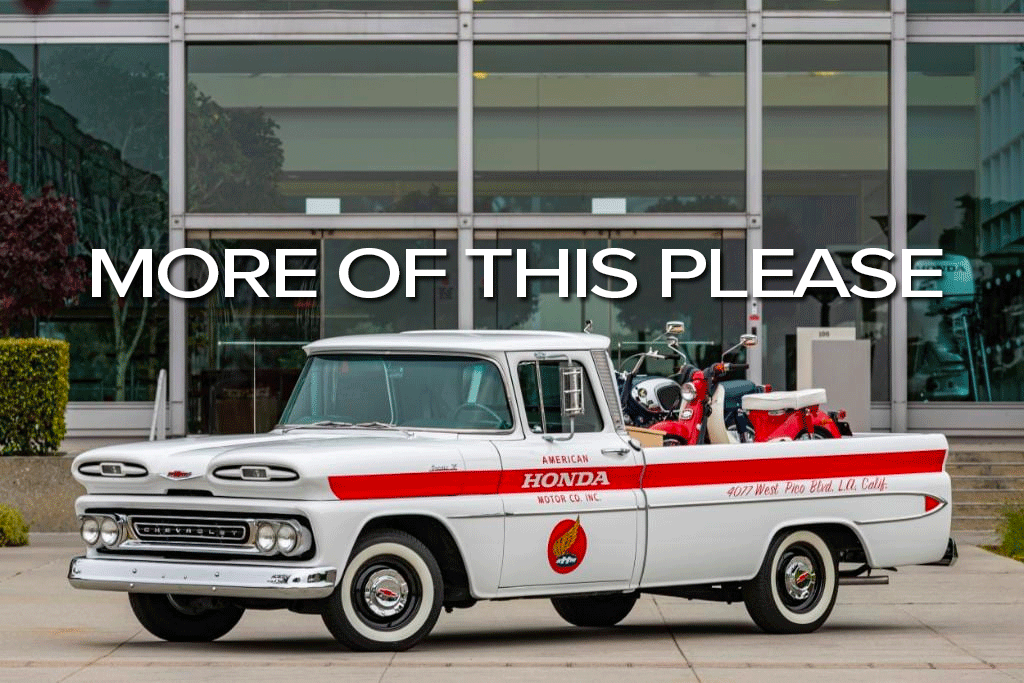Yesterday, Honda showed off its Chevrolet Apache pickup truck. This was an important vehicle early on in the timeline of American Honda Motor Company. And its place has been honored with a freshly restored truck done up to match the original.
Are there any other vehicles out there like this?
Has an automaker ever had an important model taken from another automaker? If so, let us hear about it. Also, what other old milestone or iconic models should an automaker remake or restore?
The Honda-restored Chevy Apache is a sweet machine. We’re sure that others in this same vein have to exist. Tell us about them below.


Leave a Reply